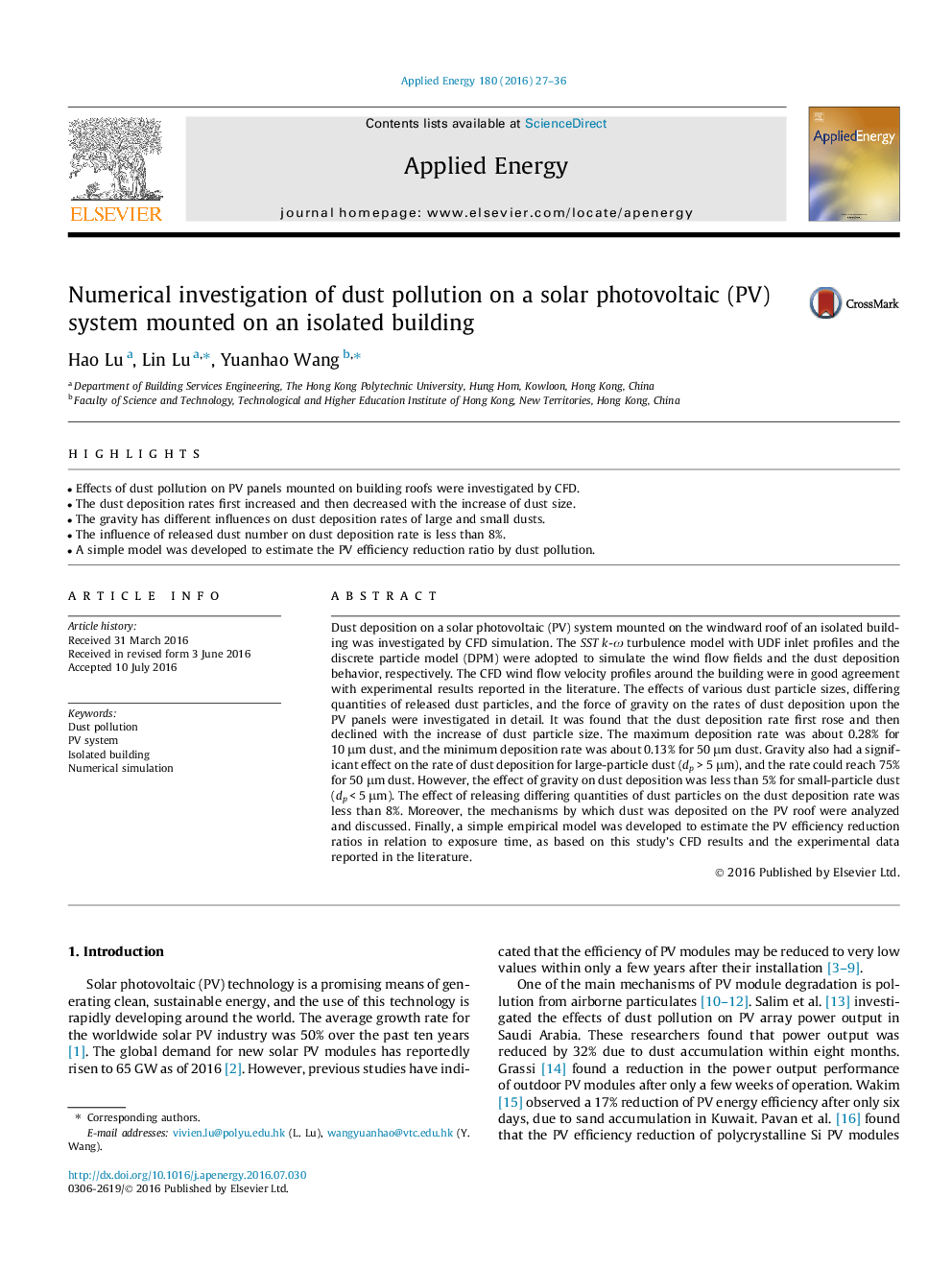| Article ID | Journal | Published Year | Pages | File Type |
|---|---|---|---|---|
| 242436 | Applied Energy | 2016 | 10 Pages |
•Effects of dust pollution on PV panels mounted on building roofs were investigated by CFD.•The dust deposition rates first increased and then decreased with the increase of dust size.•The gravity has different influences on dust deposition rates of large and small dusts.•The influence of released dust number on dust deposition rate is less than 8%.•A simple model was developed to estimate the PV efficiency reduction ratio by dust pollution.
Dust deposition on a solar photovoltaic (PV) system mounted on the windward roof of an isolated building was investigated by CFD simulation. The SST k-ω turbulence model with UDF inlet profiles and the discrete particle model (DPM) were adopted to simulate the wind flow fields and the dust deposition behavior, respectively. The CFD wind flow velocity profiles around the building were in good agreement with experimental results reported in the literature. The effects of various dust particle sizes, differing quantities of released dust particles, and the force of gravity on the rates of dust deposition upon the PV panels were investigated in detail. It was found that the dust deposition rate first rose and then declined with the increase of dust particle size. The maximum deposition rate was about 0.28% for 10 μm dust, and the minimum deposition rate was about 0.13% for 50 μm dust. Gravity also had a significant effect on the rate of dust deposition for large-particle dust (dp > 5 μm), and the rate could reach 75% for 50 μm dust. However, the effect of gravity on dust deposition was less than 5% for small-particle dust (dp < 5 μm). The effect of releasing differing quantities of dust particles on the dust deposition rate was less than 8%. Moreover, the mechanisms by which dust was deposited on the PV roof were analyzed and discussed. Finally, a simple empirical model was developed to estimate the PV efficiency reduction ratios in relation to exposure time, as based on this study’s CFD results and the experimental data reported in the literature.
